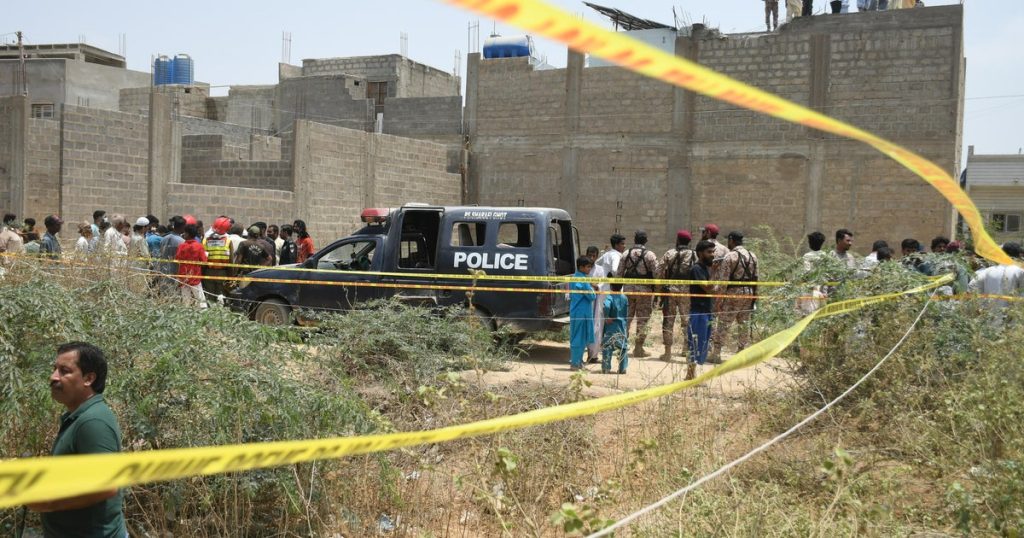Tensions between India and Pakistan have escalated sharply, punctuated by a series of military confrontations in the contested Kashmir region. Following a recent terror attack that claimed the lives of Indian tourists, both nations have ramped up their military actions against each other. Pakistani officials have labeled India’s drone strikes as serious provocations, while India’s military defends its actions as necessary responses to Pakistan’s aggression.
| Article Subheadings |
|---|
| 1) Escalating Tensions in Kashmir |
| 2) The Exchange of Fire |
| 3) International Reactions |
| 4) Public Sentiment and Concerns |
| 5) Historical Context of Conflict |
Escalating Tensions in Kashmir
The recent surge in hostilities comes on the heels of a terrorist attack in Kashmir that resulted in significant civilian casualties, leading Indian officials to accuse Pakistan of complicity. The incident, marked by attacks against Indian tourists, has heightened fears of a full-scale military confrontation between the nuclear-armed neighbors. Events escalated quickly, with militarized responses from both sides, complicating an already volatile situation. The cross-border skirmishes show no signs of abating, pushing regional security to uncertain heights.
The Exchange of Fire
As tensions peaked, Pakistan accused India of launching a drone strike involving at least 13 drones, mostly reportedly intercepted by Pakistani air defenses. A military spokesperson confirmed the loss of civilian life due to these strikes and emphasized the military’s readiness to respond aggressively to such provocations. In retaliation, India maintains that its actions are proportionate measures against the backdrop of ongoing Pakistani attacks that have resulted in numerous casualties on the Indian side. This tit-for-tat exchange highlights a dangerous cycle of military escalation that could spiral out of control.
International Reactions
The escalating conflict has drawn attention from the international community, with the U.S. State Department issuing advisories for American citizens in the region. Consulate personnel in Lahore were instructed to shelter in place due to “reports of drone explosions and possible airspace incursions.” These actions underscore the geopolitical implications of the ongoing hostilities, with calls for de-escalation emanating from various international actors. The focus remains on preventing a full-scale war that could have dire humanitarian consequences.
Public Sentiment and Concerns
On the ground in Pakistan, public sentiment reflects a mix of fear and uncertainty. Eyewitness accounts describe frightening scenarios as civilian areas become collateral damage in the escalating conflict. Local shopkeepers expressed deep concerns about the possibilities of war, especially given the nuclear capabilities of both nations. As one individual noted, “War in any form is ugly for humanity… it could turn into a humanitarian disaster because both countries possess nuclear weapons.” Such sentiments capture the broader fears within the populace, as many grapple with the immediate dangers posed by military confrontations.
Historical Context of Conflict
The backdrop to the current crisis is the historical animosity fueled by territorial disputes over Kashmir, a region claimed in full by both India and Pakistan. The history of armed conflicts and skirmishes stretches back decades, marked by two full-scale wars and numerous skirmishes over the years. Given this complex history, current events are viewed through a lens of wariness, as any miscalculation by military leaders could lead to catastrophic outcomes. Insights into past mistakes and misjudgments underscore the urgent need for diplomatic resolutions to prevent further escalation.
| No. | Key Points |
|---|---|
| 1 | Tensions between India and Pakistan have escalated following a terrorist attack in Kashmir. |
| 2 | Both nations accuse each other of aggressive military actions, including drone strikes. |
| 3 | The U.S. has issued warnings to its citizens amid the tensions, highlighting international concern. |
| 4 | Public anxiety is prevalent in both countries, given the potential for nuclear escalation. |
| 5 | The historical context of conflict between the two nations remains a significant factor in current events. |
Summary
The ongoing military confrontations between India and Pakistan in the Kashmir region mark a significant escalation in tensions, rooted in a complex history of conflict and territorial disputes. With both nations engaging in retaliatory strikes, the situation remains precarious. International attention on the conflict underscores the urgency of diplomatic interventions aimed at averting a full-scale war that could lead to devastating humanitarian consequences. Concerns raised by civilians highlight the broader implications of the military actions, reinforcing calls for peace and dialogue in the region.
Frequently Asked Questions
Question: What triggered the recent escalation between India and Pakistan?
The recent escalation was triggered by a terrorist attack in Indian-administered Kashmir, which led Indian officials to accuse Pakistan of backing the perpetrators.
Question: What military actions have been reported recently?
Reports indicate that both India and Pakistan launched drone strikes and missile attacks against each other, resulting in casualties on both sides.
Question: What are the potential consequences of this conflict?
Given that both countries possess nuclear weapons, the potential consequences of the conflict could be catastrophic, heightening humanitarian concerns for the civilian populations involved.


